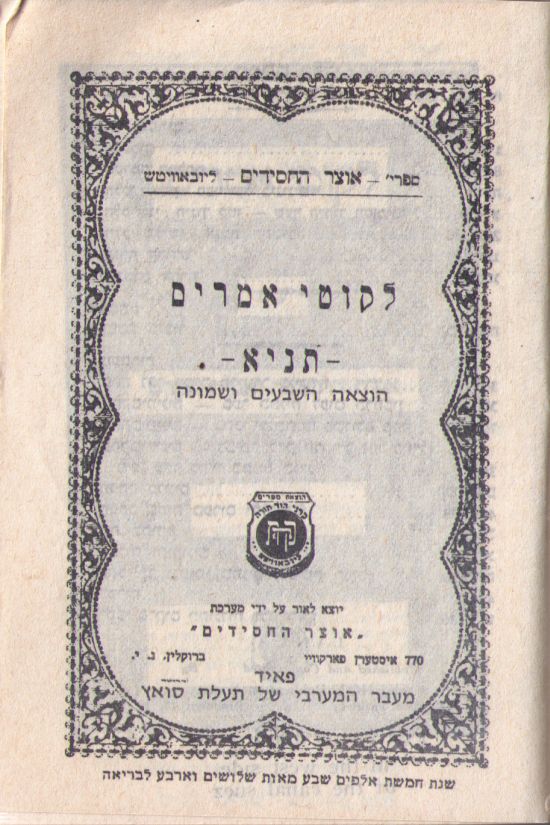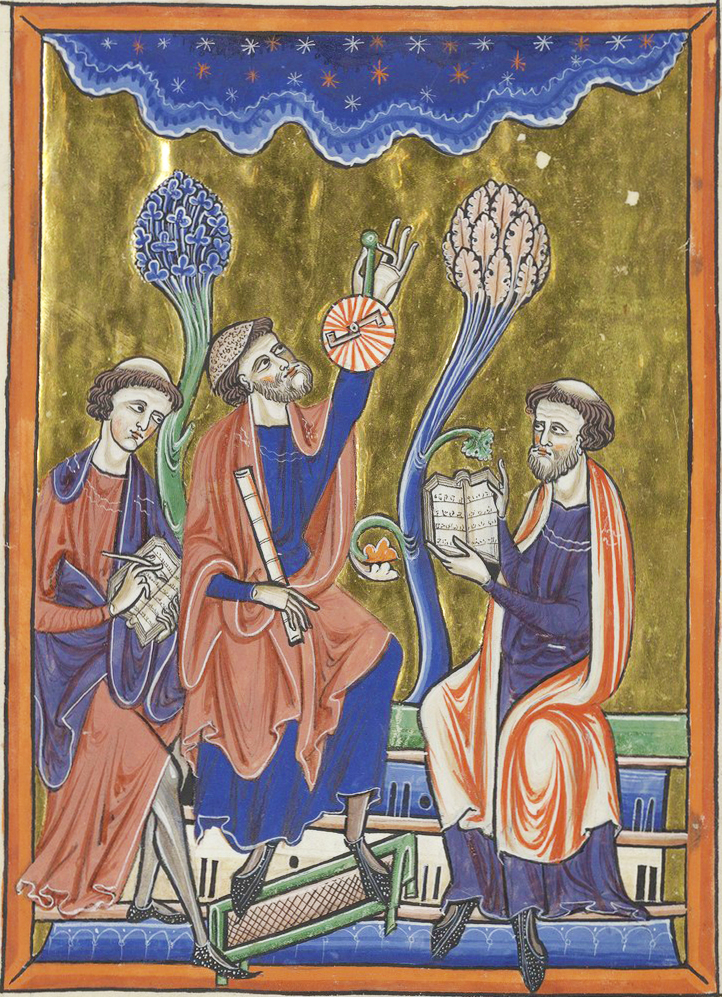|
Mitzvah
In its primary meaning, the Hebrew word (; he, מִצְוָה, ''mīṣvā'' , plural ''mīṣvōt'' ; "commandment") refers to a commandment commanded by God to be performed as a religious duty. Jewish law () in large part consists of discussion of these commandments. According to religious tradition, there are 613 such commandments. In its secondary meaning, the word ''mitzvah'' refers to a deed performed in order to fulfill such a commandment. As such, the term ''mitzvah'' has also come to express an individual act of human kindness in keeping with the law. The expression includes a sense of heartfelt sentiment beyond mere legal duty, as "you shall love your neighbor as yourself" (Leviticus 19:18). The opinions of the Talmudic rabbis are divided between those who seek the purpose of the ''mitzvot'' and those who do not question them. The latter argue that if the reason for each ''mitzvah'' could be determined, people might try to achieve what they see as the purpose of th ... [...More Info...] [...Related Items...] OR: [Wikipedia] [Google] [Baidu] |
Jewish Prayer
Jewish prayer ( he, תְּפִלָּה, ; plural ; yi, תּפֿלה, tfile , plural ; Yinglish: davening from Yiddish 'pray') is the prayer recitation that forms part of the observance of Rabbinic Judaism. These prayers, often with instructions and commentary, are found in the '' Siddur'', the traditional Jewish prayer book. Prayer, as a "service of the heart", is in principle a Torah-based commandment. It is not time-dependent and is mandatory for both Jewish men and women. However, the rabbinic requirement to recite a specific prayer text does differentiate between men and women: Jewish men are obligated to recite three prayers each day within specific time ranges ('' zmanim''), while, according to many approaches, women are only required to pray once or twice a day, and may not be required to recite a specific text. Traditionally, three prayer services are recited daily: * Morning prayer: ''Shacharit'' or ''Shaharit'' (, "of the dawn") * Afternoon prayer: '' Minc ... [...More Info...] [...Related Items...] OR: [Wikipedia] [Google] [Baidu] |
Mezuzah
A ''mezuzah'' ( he, מְזוּזָה "doorpost"; plural: ''mezuzot'') is a piece of parchment, known as a '' klaf'', contained in a decorative case and inscribed with specific Hebrew verses from the Torah ( and ). These verses consist of the Jewish prayer '' Shema Yisrael'', beginning with the phrase: "Hear, O Israel, the (is) our God, the is One". In mainstream Rabbinic Judaism, a ''mezuzah'' is affixed to the doorpost of Jewish homes to fulfill the mitzvah (Biblical commandment) to "write the words of God on the gates and doorposts of your house" (). Some interpret Jewish law to require a ''mezuzah'' in every doorway in the home except bathrooms (which are not a living space), laundry rooms and closets, if they are too small to qualify as rooms. The ''klaf'' is prepared by a qualified scribe ("'' sofer stam'') who has undergone training, both in studying the relevant religious laws, and in the more practical parts (i.e. carving the quill and practising writing). The verse ... [...More Info...] [...Related Items...] OR: [Wikipedia] [Google] [Baidu] |
Tefillin
Tefillin (; Israeli Hebrew: / ; Ashkenazic pronunciation: ), or phylacteries, are a set of small black leather boxes with leather straps containing scrolls of parchment inscribed with verses from the Torah. Tefillin are worn by adult Jews during weekday morning prayers. In Orthodox and traditional communities, they are worn solely by men, while some Reform and Conservative (Masorti) communities allow them to be worn by both men and women. By traditional Jewish Law (halacha), women are exempt from most time-dependent positive commandments. Although "tefillin" is technically the plural form (the singular being "tefillah"), it is often used as a singular as well. The arm-tefillah (or ''shel yad'' iterally "of the hand" is placed on the upper (non-dominant) arm, and the strap wrapped around the forelimb, hand and middle finger; while the head-tefillah (or ''shel rosh'' iterally "of the head" is placed between the eyes at the boundary of the forehead and hair. They are intended ... [...More Info...] [...Related Items...] OR: [Wikipedia] [Google] [Baidu] |
Birkat Hamazon
Birkat Hamazon ( he, בִּרְכַּת הַמָּזוׂן, The Blessing of the Food), known in English as the Grace After Meals ( yi, ; translit. ''bentschen'' or "to bless", Yinglish: Bentsching), is a set of Hebrew blessings that Jewish law prescribes following a meal that includes at least a kezayit (olive-sized) piece of bread. It is a understood as a Biblical Commandment based on Deuteronomy 8:10. Birkat Hamazon is recited after a meal containing bread or similar foods that is made from the five grains, with the exception of bread that comes as a dessert (''pas haba'ah b'kisanin'') and food that does not possess the form or appearance of bread (''torisa d'nahama''), in which case a blessing that summarizes the first three blessings (''birkat me'ein shalosh'') is recited instead. It is a matter of rabbinic dispute whether ''birkat hamazon'' must be said after eating certain other bread-like foods such as pizza. Except in teaching situations, ''Birkat hamazon'' is typ ... [...More Info...] [...Related Items...] OR: [Wikipedia] [Google] [Baidu] |
Takkanah
A ''takkanah'' (plural ''takkanot'') is a major legislative enactment within ''halakha'' (Jewish law), the normative system of Judaism's laws. A ''takkanah'' is an enactment which revises an ordinance that no longer satisfies the requirements of the times or circumstances, or which, being deduced from a biblical passage, may be regarded as new. It is, therefore, the antithesis of the ''gezerah''. The term is applied also to the institution provided for in the enactment. ''Takkanot'' were enacted even in the time of the Second Temple, those of unknown origin being ascribed to earlier leaders, and they have been promulgated at all subsequent periods of Jewish history. Introduction Classical Jewish law granted rabbinic sages wide legislative powers. There are two powerful legal tools within the halakhic system: * ''Gezeirah'': "preventive legislation" of the classical rabbis, intended to prevent violations of the commandments * ''Takkanah'': "positive legislation", practices institu ... [...More Info...] [...Related Items...] OR: [Wikipedia] [Google] [Baidu] |
List Of Jewish Prayers And Blessings
Listed below are some Hebrew prayers and blessings that are part of Judaism that are recited by many Jews. Most prayers and blessings can be found in the Siddur, or prayer book. This article addresses Jewish liturgical blessings, which generally begin with the formula: Transliteration: ' Translation: "Blessed are You, our God, King of the universe..." Pronunciation In the transliterations below, ' is used to refer to the sh'vah, which is similar/equivalent to ə; a mid-word aleph, a glottal stop; and a mid-word ayin, a voiced pharyngeal fricative ʕ similar/equivalent to Arabic . Whenever ''`'' is used, it refers to ayin whether word-initial, medial, or final. 'H/h' are used to represent both he, an English h sound as in "hat"; and ḥes, a voiceless pharyngeal fricative ħ equivalent to Arabic . Whenever 'ḥ' is used, it refers to ḥet. Resh is represented by an 'r,' though it's equivalent to Spanish 'r,' Spanish 'rr,' or French 'r,' depending on one's dialect. In ... [...More Info...] [...Related Items...] OR: [Wikipedia] [Google] [Baidu] |
Rabbi
A rabbi () is a spiritual leader or religious teacher in Judaism. One becomes a rabbi by being ordained by another rabbi – known as ''semikha'' – following a course of study of Jewish history and texts such as the Talmud. The basic form of the rabbi developed in the Pharisees, Pharisaic (167 BCE–73 CE) and Talmudic (70–640 CE) eras, when learned teachers assembled to codify Judaism's written and oral laws. The title "rabbi" was first used in the first century CE. In more recent centuries, the duties of a rabbi became increasingly influenced by the duties of the Clergy, Protestant Christian minister, hence the title "pulpit rabbis", and in 19th-century Germany and the United States rabbinic activities including sermons, pastoral counseling, and representing the community to the outside, all increased in importance. Within the various Jewish denominations, there are different requirements for rabbinic ordination, and differences in opinion regarding who is recognized as ... [...More Info...] [...Related Items...] OR: [Wikipedia] [Google] [Baidu] |
613 Commandments
The Jewish tradition that there are 613 commandments ( he, תרי״ג מצוות, taryag mitzvot) or mitzvot in the Torah (also known as the Law of Moses) is first recorded in the 3rd century AD, when Rabbi Simlai mentioned it in a sermon that is recorded in Talmud Makkot 23b. The 613 commandments include "positive commandments", to perform an act (), and "negative commandments", to abstain from certain acts (). The negative commandments number 365, which coincides with the number of days in the solar year, and the positive commandments number 248, a number ascribed to the number of bones and main organs in the human body. Although the number 613 is mentioned in the Talmud, its real significance increased in later medieval rabbinic literature, including many works listing or arranged by the . The most famous of these was an enumeration of the 613 commandments by Maimonides. Many of the cannot be currently observed, following the destruction of the Second Temple, though they ... [...More Info...] [...Related Items...] OR: [Wikipedia] [Google] [Baidu] |
Second Temple Period
The Second Temple period in Jewish history lasted approximately 600 years (516 BCE - 70 CE), during which the Second Temple existed. It started with the return to Zion and the construction of the Second Temple, while it ended with the First Jewish–Roman War and the destruction of Jerusalem in 70 CE. In 587/6 BCE, the Kingdom of Judah was conquered by the Neo-Babylonian Empire. The Judeans lost their independence and monarchy, and their holy city was destroyed. Part of the Judean population was exiled to Babylon; it was eventually allowed to return following a proclamation by the Persian king Cyrus the Great that was issued after the fall of Babylon to the Achaemenid Empire. Under Persian provincial governance ( 539 – 332 BCE), the returned Jewish population in Judah was allowed to self-govern and rebuild the Temple in Jerusalem. In 332 BCE, Judea was conquered by Alexander the Great, and later incorporated into the Ptolemaic Kingdom (c. 301-200 BCE) and the Seleucid ... [...More Info...] [...Related Items...] OR: [Wikipedia] [Google] [Baidu] |
Halakha
''Halakha'' (; he, הֲלָכָה, ), also transliterated as ''halacha'', ''halakhah'', and ''halocho'' ( ), is the collective body of Jewish religious laws which is derived from the written and Oral Torah. Halakha is based on biblical commandments (''mitzvot''), subsequent Talmudic and rabbinic laws, and the customs and traditions which were compiled in the many books such as the ''Shulchan Aruch''. ''Halakha'' is often translated as "Jewish law", although a more literal translation of it might be "the way to behave" or "the way of walking". The word is derived from the root which means "to behave" (also "to go" or "to walk"). ''Halakha'' not only guides religious practices and beliefs, it also guides numerous aspects of day-to-day life. Historically, in the Jewish diaspora, ''halakha'' served many Jewish communities as an enforceable avenue of law – both civil and religious, since no differentiation of them exists in classical Judaism. Since the Jewish Enlightenment (''Haska ... [...More Info...] [...Related Items...] OR: [Wikipedia] [Google] [Baidu] |
Tanya (Judaism)
The ''Tanya'' () is an early work of Hasidic philosophy, by Rabbi Shneur Zalman of Liadi, the founder of Chabad Hasidism, first published in 1796. Its formal title is ''Likkutei Amarim'' (, Hebrew, "collection of statements"), but is more commonly known by its first Hebrew word ''tanya'', which means "it has been taught", where he refers to a baraita section in "Niddah", at the end of chapter 3, 30b. Tanya is composed of five sections that define Hasidic mystical psychology and theology as a handbook for daily spiritual life in Jewish observance. The ''Tanya'' is the main work of the Chabad philosophy and the Chabad approach to Hasidic mysticism, as it defines its general interpretation and method. The subsequent extensive library of the Chabad school, authored by successive leaders, builds upon the approach of the Tanya. Chabad differed from "Mainstream Hasidism" in its search for philosophical investigation and intellectual analysis of Hasidic Torah exegesis. This empha ... [...More Info...] [...Related Items...] OR: [Wikipedia] [Google] [Baidu] |
Rishonim
''Rishonim'' (; he, ; sing. he, , ''Rishon'', "the first ones") were the leading rabbis and '' poskim'' who lived approximately during the 11th to 15th centuries, in the era before the writing of the ''Shulchan Aruch'' ( he, , "Set Table", a common printed code of Jewish law, 1563 CE) and following the '' Geonim'' (589-1038 CE). Rabbinic scholars subsequent to the ''Shulchan Aruch'' are generally known as ''acharonim'' ("the latter ones"). The distinction between the ''rishonim'' and the ''geonim'' is meaningful historically; in ''halakha'' (Jewish Law) the distinction is less important. According to a widely held view in Orthodox Judaism, the acharonim generally cannot dispute the rulings of rabbis of previous eras unless they find support from other rabbis in previous eras. On the other hand, this view is not formally a part of ''halakha'' itself, and according to some rabbis is a violation of the halakhic system.See Kesef Mishna (Maamrim 2:2), Kovetz Igros Chazon Ish (2:26 ... [...More Info...] [...Related Items...] OR: [Wikipedia] [Google] [Baidu] |
.jpg)


.jpg)
.jpg)

